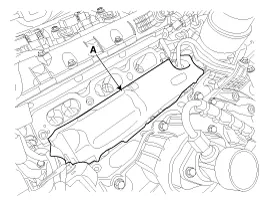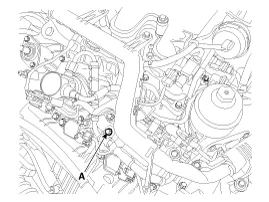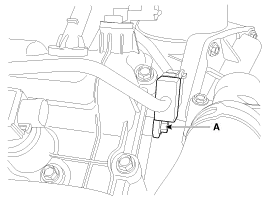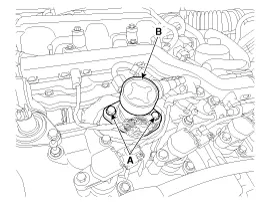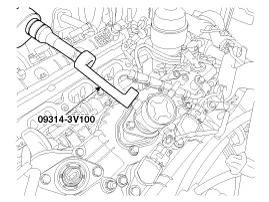Kia Cadenza YG: Fuel Delivery System / High Pressure Fuel Pump Repair procedures
| Removal |
In case of removing the high pressure fuel pump, high
pressure fuel pipe, delivery pipe, and injector, there may be injury
caused by leakage of the high pressure fuel. So don’t do any repair
work right after engine stops.
|
| 1. |
Turn the ignition switch OFF and disconnect the battery negative (-) cable. |
| 2. |
Release the residual pressure in fuel line.
(Refer to the Fuel Delivery System - Repair Procedures - "Release Residual Pressure in Fuel Line").
|
| 3. |
Remove the pump foam (A).
|
| 4. |
Disconnect the fuel pressure control valve connector (A) and the fuel feed tube quick-connector (B).
|
| 5. |
Remove the intake manifold.
(Refer to Engine Mechanical System - "Intake Manifold") |
| 6. |
Remove the injector foam (A).
|
| 7. |
Remove the high pressure fuel pipe.
|
| 8. |
Remove the installation bolts (A), and then remove the high pressure fuel pump (B) from the cylinder head assembly.
|
| Installation |
|
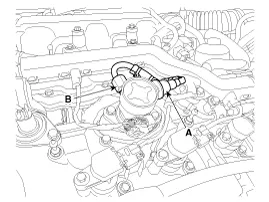
|
|
|
|
|
|
|
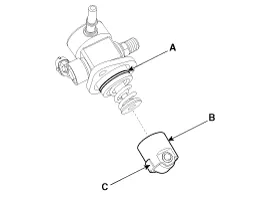
| 1. |
Install in the reverse order of removal.
|
Removal In case of removing the high pressure fuel pump, high pressure fuel pipe, delivery pipe, and injector, there may be injury caused by leakage of the high pressure fuel.
Removal 1. Lift the vehicle and support the fuel tank with a jack. 2. Remove the nuts from fuel tank. 3. Release the fuel tank bands (A). 4.
Other information:
Kia Cadenza YG 2016-2021 Service Manual: Surround View Monitoring Switch Repair procedures
Removal 1. Disconnect the negative (-) battery terminal. 2. Remove the floor console upper cover. (Refer to Body - "Floor Console Assembly") 3. Disconnect the console upper cover connector (A). 4. Remove the cup holder assembly (A) after loosening the mounting screws.
Kia Cadenza YG 2016-2021 Service Manual: Heater & A/C Control Unit (DATC) Repair procedures
Inspection Self diagnosis 1. Self-diagnosis process 2. How to read self-diagnostic code. After the display panel flickers three times every 0.5 second, the corresponding fault code flickers on the setup temperature display panel every 0.





